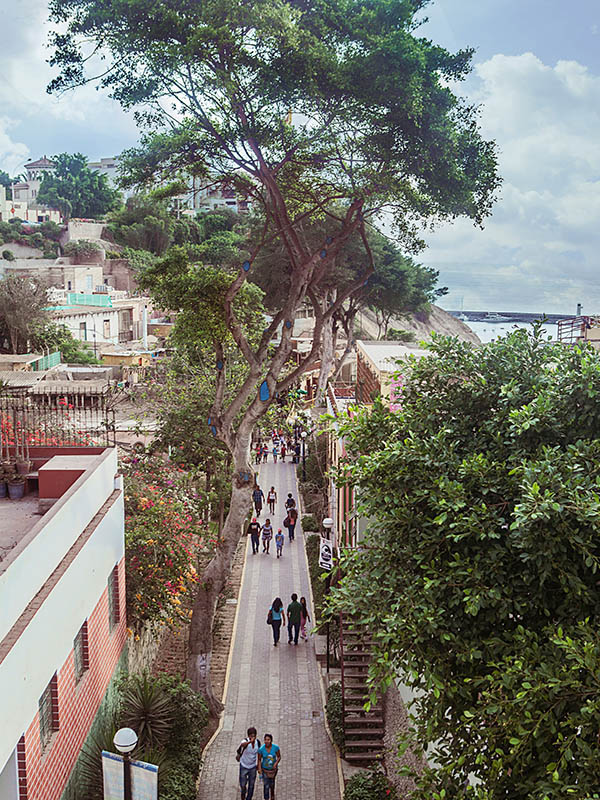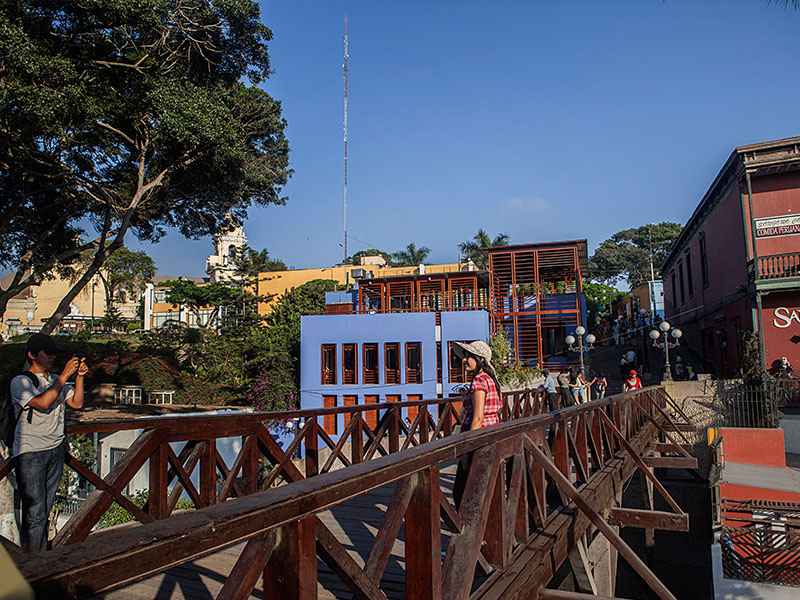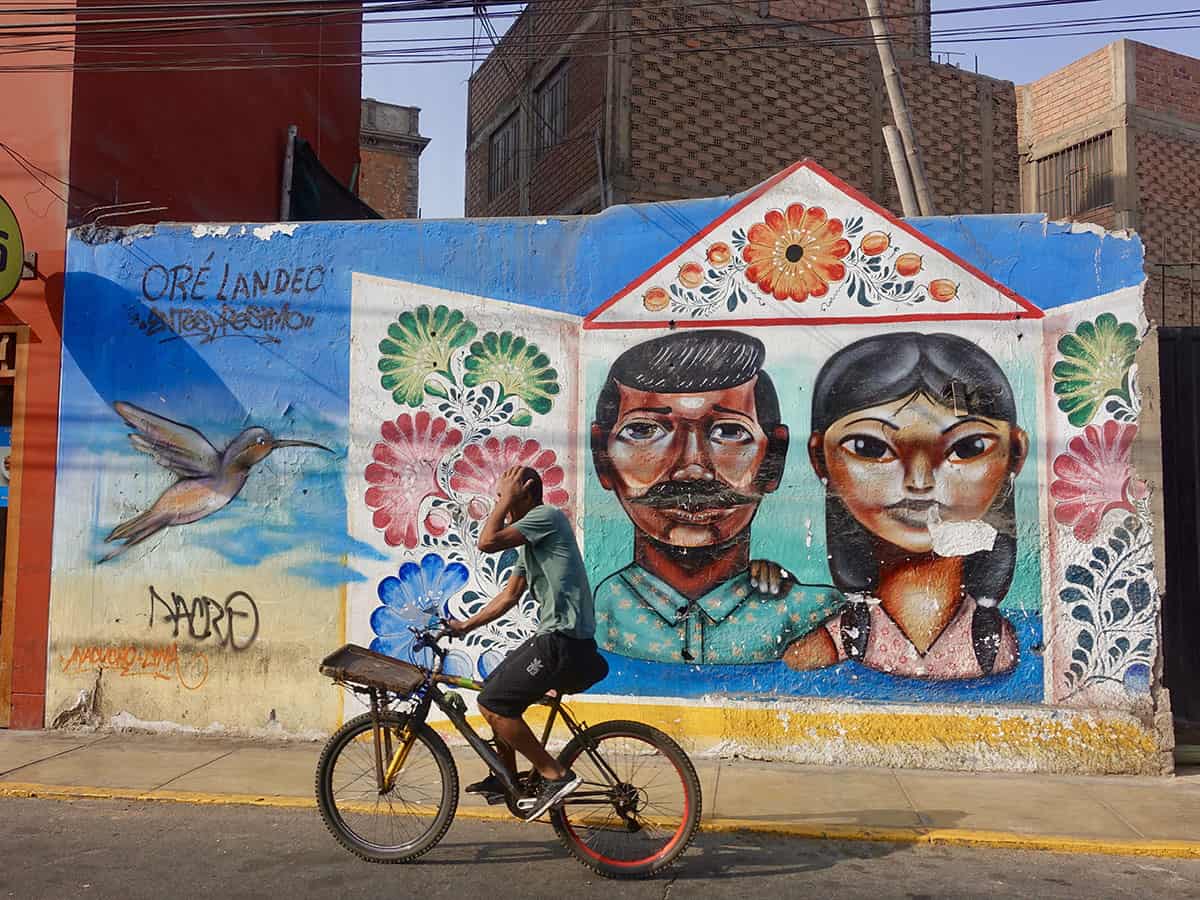
The neighborhood of Barranco offers travelers a unique taste of colorful architecture amid a budding art scene. Enjoy a stroll through this coastal neighborhood and soak up the surrounding history.
In the cultural mosaic that is Peru, Barranco has a European colonial charm that shines through its gathering centers, striking architecture and proximity to the ocean. It’s no wonder that these combinations have gathered poets, artists, and ideologues for generations. With its nightlife and artistic energy, this neighborhood retains a bohemian feel. It is arguably the most romantic of the districts that comprise Lima.
Lima Tours:
Located south of Miraflores and north of Chorrillos, Barranco is nestled on the coast such that much of the cooler, humid winds from the southern Pacific are blocked and dispersed by the coastal area of Chorrillos. This opportune geography gives Barranco its year-round dryer, warmer weather which contrasts with the rest of the coastal districts which experience much of the year with damp gray mist. Perhaps this is why Barranco was the hot-spot beach resort, a Balneario, for Limeñan aristocracy throughout the 19th century, when it was still considered outside of the city of Lima.
Today the rapid growth of Peru’s biggest city surrounds Barranco, which has pushed the modern aristocracy’s beach vacationing further south. Barranco redefines artistic enterprise, free spirits and live music. Like most Bohemian places it houses and nourishes epicureanism and flaunts creativity.

Walk down the pedestrian alley, Bajada de Banos, past restaurants to a coastal view.
You’ll delight in the numerous and distinct bars and restaurants that comprise its walkways. From palatial to hole-in-the-wall you’ll find the right place to indulge in your imbibition of choice. Beautiful views of the Pacific Ocean, bars, nightclubs, restaurants, coffee shops, bakeries, and peñas come to life by night.
The name Barranco literally means ravine. The deeply cut banks of this ancient river are now a colorful patchwork quilt of bars and see food venues. The walk descends to the Pacific Ocean and underpasses the landmark bridge, El Puente de Los Suspiros (Bridge of Sighs, as in love sighs) where legend says one can breathe in the fresh salty air with a partner in hopes of eternal love.

Walk across Barranco’s iconic El Puente de Los Suspiros.
For an upscale lounge experience, sip on the international collection of cocktails at Ayahuasca Restobar. Located in a stunning renovated 19th century colonial mansion, Ayahuasca’s dazzling appearance is coercing. Since it’s not a party joint, as many other venues around it, it makes it ideal to sip, nibble and catch up with a friend.
If you’re seeking a more intimate experience with soft live musical accompaniment, visit Posada del Angel or its sister location Posada del Angel III. The warm lighting and unpretentious decor reflects the angelic romanticist type singer/songwriters who bring these evenings to life.
Barranco is simultaneously a work of art and an inspiration. It has inspired generations of artists such as late singer/poet Chabuca Granda (who sings about El Puente de Los Suspiros) and Martín Adán (critically acclaimed novelist best known for La Casa de Carton, the Cardboard House, which is based on Barranco), and current sculptor Victor Delfin.
Barranco’s playful, artistic spirit permeates the streets and manifests in all forms of stunning street art, wall murals, pensive ladies, and even R2D2 trash cans.

Photo by Adrian Whittle on Flickr
Barranco is also home to Lima’s Museum of Modern Art (MAC), famous photographer Mario Testino’s Association (MATE), and a motley of private art galleries and shops can be found by simply strolling through the district. Even hotels can be galleries: Second Home Guest House and Gallery hosts renowned artist Victor Delfin’s (whose iconic sculpture is the landmark of Lima’s Parque del Amor, Love Park) personal collection in an intimate, 6 room, home overlooking the ocean.
Maximize your Barranco experience by booking a stay at one of the district’s boutique hotels. Contact us for a customized itinerary to Peru. Click “Go Discover” now.



Email: [email protected]
Sign up to receive our newsletter for great articles, stunning photos, and special deals.